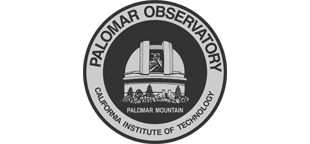PSM2023 Participants
PSM2023 participants (A. Boden)
Caltech Campus Sessions
#
Name
Affiliation
Contribution
Title/Topic (mouse hover for abstract)
1
Tomas Ahumada
Caltech
poster
2
Charles Bailyn
Yale
talk
3
Eric Becklin
UCLA
talk
4
Abhijit Biswas Biswas
JPL
talk
5
Andy Boden
Caltech
poster
6
Bryce Bolin
Goddard Space Flight Center
poster
7
Peter Boorman
Caltech
none
8
Luke Bouma
Caltech
none
9
Bryson Cale
IPAC
talk
10
Yun-Ting Cheng
Caltech
none
11
David Ciardi
IPAC
none
12
Judy Cohen
Caltech
none
13
Anthony Cook
Griffith Observatory
invited talk
14
Curtis Corcoran
Staff
none
15
Kaustav Kashyap Das
Caltech
talk
16
Ivey Davis
Caltech
talk
17
Dalia De Ita
Caltech
none
18
Richard Dekany
Caltech
talk
19
Yuanze Ding
Caltech
none
20
George Djorgovski
Caltech
none
21
Nicholas Earley
Caltech
talk
22
Sergio Fajardo-Acosta
Caltech
none
23
Christoffer Fremling
Caltech
talk
24
Jonathan Gomez Barrientos
Caltech
poster
25
Matthew Graham
Caltech
talk
26
Richard Green
U Arizona
talk
27
Michael Greklek-McKeon
Caltech
poster
28
Gregg Hallinan
Caltech
none
29
George Helou
Caltech
none
30
Lynne Hillenbrand
Caltech
invited talk
31
Luis Ho
Peking University
invited talk
32
Marziye Jafariyazani
IPAC
none
33
Viraj Karambelkar
Caltech
talk
34
Mansi M. Kasliwal
Caltech
none
35
Robert Kirshner
Caltech
none
36
Heather Knutson
Caltech
invited talk
37
Miranda Kong
Caltech
poster
38
Kathleen Koviak
Staff
none
39
Ed Krupp
Griffith Observatory
invited talk
40
W. Garrett Levine
Yale
poster
41
Victor Liu
Yale
poster
42
Ashish Mahabal
Caltech
talk
43
Yao-Yuan Mao
University of Utah
invited talk
44
Federico Marocco
IPAC
talk
45
Bob Massey
Docent
none
46
Keith Matthews
Caltech
none
47
Dimitri Mawet
Caltech
none
48
Thomas Munnecke
Docent
none
49
Damian Musk
Caltech
none
50
Ricky Nilsson
IPAC
poster
51
Rebecca Oppenheimer
AMNH
invited talk
52
Sterl Phinney
Caltech
none
53
Tom Prince
Caltech
talk
54
Vikram Ravi
Caltech
talk
55
Luisa Rebull
IPAC
none
56
Mike Ressler
JPL
talk
57
Antonio Rodriguez
Caltech
talk
58
Tony Rodriguez
Caltech
poster
59
Sam Rose
Caltech
none
60
Morgan Saidel
Caltech
none
61
Roberto Sandoval
Staff
none
62
Anneila Sargent
Caltech
none
63
Patrick Shopbell
Caltech
none
64
Philip Silverstone
Affiliate
none
65
Rob Simcoe
MIT
talk
66
Leo Singer
NASA Goddard Space Flight Center
talk
67
Tom Soifer
Caltech
none
68
Gokul Srinivasaragavan
UM
talk
69
Robert Stein
Caltech
talk
70
Daichi Tsuna
Caltech
none
71
Zach Vanderbosch
Caltech
poster
72
Yunfei Wen
Caltech
none
73
Michael Werner
JPL
poster
74
Isaac Wilson
Staff
none
75
Lin Yan
Caltech
none
Palomar Observatory Session
#
Name
Affiliation
Seats
1
Tomas Ahumada
Caltech
1 2
Charles Bailyn
Yale
1 3
Eric Becklin
UCLA
1 4
Bryson Cale
IPAC
1 5
Anthony Cook
Griffith Observatory
1 6
Curtis Corcoran
Staff
1 7
Kaustav Kashyap Das
Caltech
1 8
Ivey Davis
Caltech
1 9
Dalia De Ita
Caltech
1 10
Su Direkci
Caltech
1 11
Nicholas Earley
Caltech
1 12
Christoffer Fremling
Caltech
1 13
Jonathan Gomez Barrientos
Caltech
1 14
Matthew Graham
Caltech
1 15
Richard Green
U Arizona
1 16
Lynne Hillenbrand
Caltech
1 17
Luis Ho
Peking University
yes 18
Viraj Karambelkar
Caltech
1 19
Robert Kirshner
Caltech
1 20
Miranda Kong
Caltech
1 21
Ed Krupp
Griffith Observatory
1 22
W. Garrett Levine
Yale
1 23
Victor Liu
Yale
1 24
Bob Massey
Docent
1 25
Ricky Nilsson
IPAC
1 26
Rebecca Oppenheimer
AMNH
1 27
Tom Prince
Caltech
1 28
Mike Ressler
JPL
1 29
Antonio Rodriguez
Caltech
1 30
Morgan Saidel
Caltech
1 31
Roberto Sandoval
Staff
1 32
Rob Simcoe
MIT
1 33
Leo Singer
NASA Goddard Space Flight Center
1 34
Robert Stein
Caltech
1 35
Isaac Wilson
Staff
1
Questions? We've answered many common visiting, media, and academic questions in our public FAQ page .COO Feedback portal.


